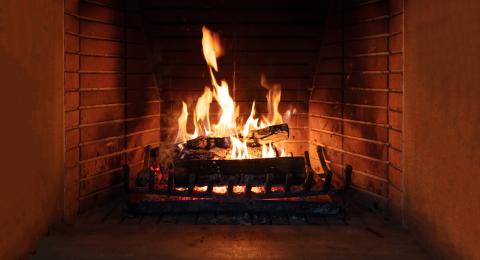
Fire Safety Order 2005
The Fire Safety Order (FSO) 2005 became law on the 1st October 2006, replacing 118 pieces of legislation, repealing the Fire Precautions Act 1971 and revoking The Fire Precautions (Workplace) Regulations.
This law means it is no longer the fire service's duty to make sure the workplace is safe. That duty lies with the 'responsible person' and they will be held accountable under the new legislation.
Our Fire Protection Officers will audit fire risk assessments and other relevant documentation relating to the business premises. At the end of the audit, the 'responsible person' will be informed of their compliance level. If there are matters of concern, the Fire Protection Officers will work with the responsible person to help make necessary improvements.
If improvements aren't made or the risk assessment remains unsatisfactory, our officers may issue an alterations notice, an enforcement notice, a prohibition notice and possible prosecution.
Fire Risk Assessment
If you have a business, you have a legal duty to make sure that it is safe for yourself and your staff, customers, visitors, and anyone else who may use or attend your premises.
Part of this legal duty is to carry out a fire risk assessment and review it regularly. The law which governs this is the Regulatory Reform (Fire Safety) Order 2005, sometimes simply known as the fire safety order (FSO).
You will find guidance on why and how to carry out a fire risk assessment on the .GOV.UK website which will help you familiarise yourself with what is needed. Within this guidance you will also find reference and a link to the updated Fire Risk Assessment Chart, now referred to as the Fire Safety Risk Assessment - 5-step checklist
Carrying out an assessment of the fire risks within the business premises is a key part of the 'responsible person's' role. It’s about understanding the potential risks, then improving your fire safety precautions to keep people safe.
There is no set format for completing a fire risk assessment, but we have provided a downloadable guide to offer some suggestions | Guide on Fire Rsk Assessments
Why do it?
A Fire Risk Assessment is a legal requirement. If you are responsible for a building you need to make sure a suitably competent person completes a Fire Risk Assessment. It is your duty to identify fire risks and hazards in your premises and take appropriate action.
Make sure you review your risk assessment regularly and whenever significant changes have been made that would have an impact on it. It’s good business sense as well as a legal requirement, often businesses don’t recover after a fire, and effective fire prevention starts with properly understanding the risks.
Your local fire and rescue authority cannot carry out risk assessments for you.
Recording Evidence of premises maintenance and staff training
If our officers visit your premises to audit compliance with fire legislation, they will ask to see evidence that you have been adequately maintaining your premises and training your staff. We have produced a log book which can be used to assist you in recording this evidence. You can download a copy of this document at the bottom of this page.
Changes to your Premises
In most cases, you will be able to make changes to your premises but you must remember that you will be responsible for managing the risk you create and you will still have to comply with the planning process and Building Regulations. You will need to re-visit your fire risk assessment and look at how the changes will affect the risk in your premises; assess if your risk management measures are adequate and consider if you need to adopt further measures.
In some higher risk premises, in which the risk to life is considered higher than normal or where particularly complicated fire safety arrangements are required, Essex County Fire and Rescue will be able to issue an 'alterations notice'. An alterations notice can require a responsible person to inform Essex County Fire and Rescue of any changes they intend to make to premises where those changes would create a significant increase in risk.
A worked example of a fire risk assessment
Initially, a simple single line drawing of the premises roughly to scale should be drawn, showing any relevant structural features and the use of particular areas e.g. production, storage, office accommodation, storage and plant etc. A copy of the plan will be useful should you have a fire at your premises - this can be given to the fire service when they arrive to assist them in firefighting operations. The plan can then be used to indicate hazards and persons at significant risk. It will assist to identify where combustibles and ignition sources come together, or are in close proximity and appropriate action can be taken.
A simple noughts and crosses system can be used to indicate risks. We recommend red circles for combustibles and red crosses for heat or ignition sources.
If any required improvements are expected to be expensive, interim measures may be put in place until they can be properly implemented, provided nobody is put at an unacceptable risk. Following this, the responsible person should make a record of the assessment, prepare the action plan, provide staff training and then monitor and review the risk assessment as needed.
Paying guest accommodation
Did you know self-catering holiday properties and premises for short term paying guests are covered under the Fire Safety Order?
The below guides will help you understand what is required to meet compliance, reduce fire risk and help keep your guests and property.
- Do you have paying guests? – guide for small premises (similar in size to a family home)
- Sleeping accommodation- guide for larger premises.
The Fire Safety Order applies if anyone pays to stay in your premises or in a room within your premises, other than to live there permanently. The Fire Safety Order applies to all lets that are not let as a principal residence, even if you rent out a room in your premises only once, it applies to you!

Do you have an open fire or wood burner?

Do you work with people who have Dementia?

Information about reduced hearing



